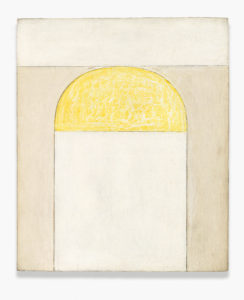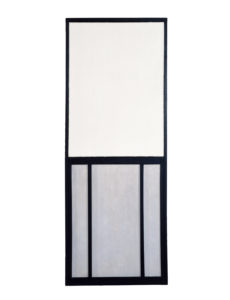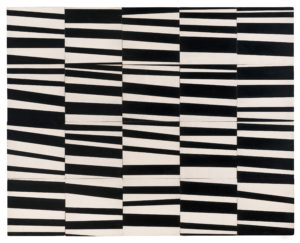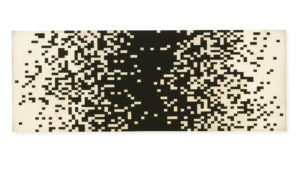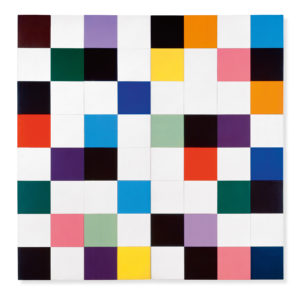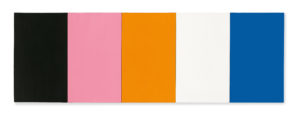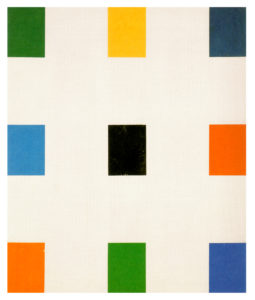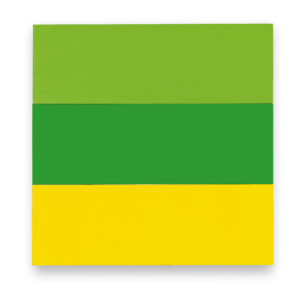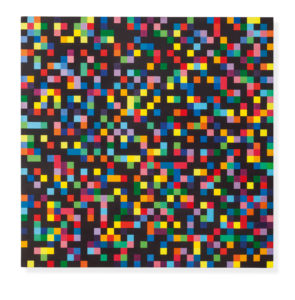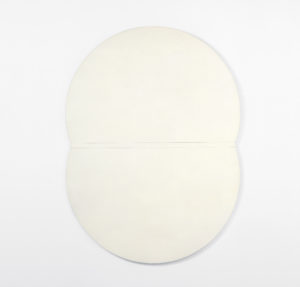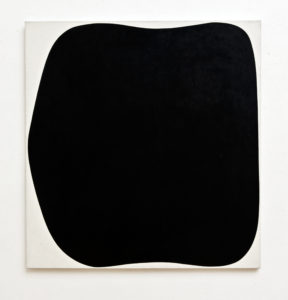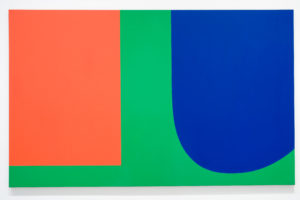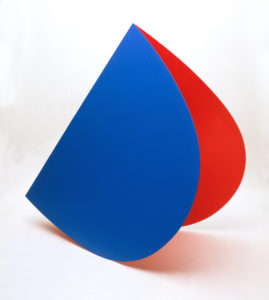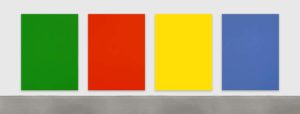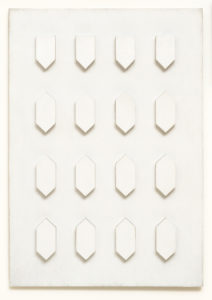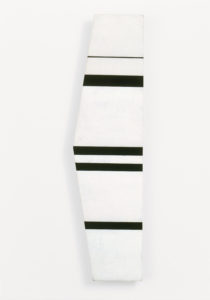Ellsworth Kelly
The Museum of Modern Art
September 12 – November 4, 1973
New York 1973d
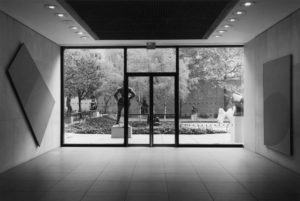
Red Green
EK 388
Red Blue
EK 335
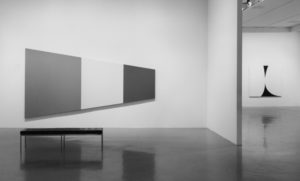
Red Yellow Blue V
EK 389
Rebound
EK 213
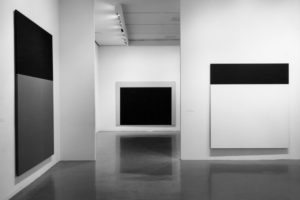
Black Green
EK 431
Black Yellow-Orange
EK 433
Black over White
EK 374
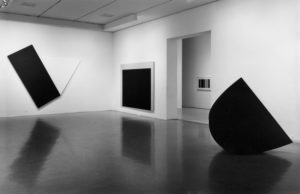
Black with White Triangle
EK 501
Black Yellow-Orange
EK 433
Color Strips Arranged by Chance
EK D 51.87
Blue Red Rocker
EK 321
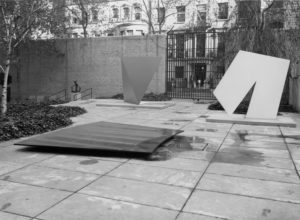
Curve I
EK 506
Green Blue
EK 414
White Sculpture I
EK 419
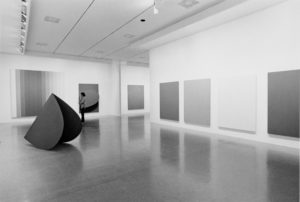
Spectrum IV
EK 384
Blue Red Rocker
EK 321
Blue over Blue
EK 317
Blue Green
EK 289
Green Red Yellow Blue
EK 351
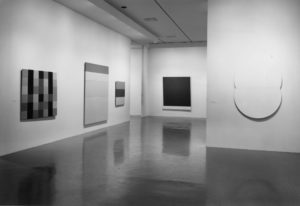
Sanary
EK 48
Gaza
EK 96
Train Landscape
EK 61
North River
EK 225
White Plaque: Bridge Arch and Reflection
EK 72
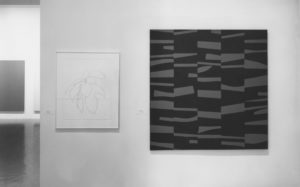
Green Red Yellow Blue
EK 351
Avocado
EK P 6.67
Meschers
EK 42
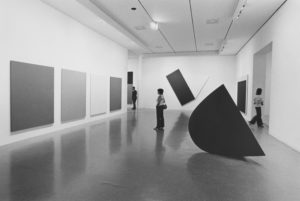
Green Red Yellow Blue
EK 351
Black Green
EK 431
Black with White Triangle
EK 501
Blue Red Rocker
EK 321
Black Yellow-Orange
EK 433
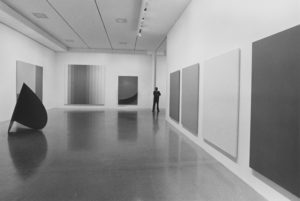
Blue Red Rocker
EK 321
Orange with Green
EK 446
Spectrum IV
EK 384
Blue over Blue
EK 317
Green Red Yellow Blue
EK 351
![[no photographer on file]](https://ellsworthkelly.org/wp-content/uploads/2018/01/1973-EK-DAP-73.36-eks-300x203.jpg)
Red Blue Green
EK 316
Green Red Yellow Blue
EK 351
Black with White Triangle
EK 501
Black Yellow Orange
EK 433
Blue Red Rocker
EK 321
![[no photographer on file]](https://ellsworthkelly.org/wp-content/uploads/2018/01/1973-EK-DAP-73.62-eks-300x203.jpg)
Gaza
EK 96
Train Landscape
EK 61
Orange with Green
EK 446
Blue Green
EK 289
North River
EK 225
![[no photographer on file]](https://ellsworthkelly.org/wp-content/uploads/2018/01/1973-EK-DAP-73.63-eks-300x202.jpg)
42nd
EK 143
Spectrum Colors Arranged by Chance
EK 63
Colors for a Large Wall
EK 46
Sanary
EK 48
Gaza
EK 96
![[no photographer on file]](https://ellsworthkelly.org/wp-content/uploads/2018/01/1973-EK-DAP-73.64-eks-300x204.jpg)
Blue Green
EK 289
Orange Red Relief
EK 211
North River
EK 225
Rebound
EK 213
Black Ripe
EK 90
Blue Disk
EK 323
![[no photographer on file]](https://ellsworthkelly.org/wp-content/uploads/2018/01/1973-EK-DAP-73.67-eks-300x203.jpg)
Red Yellow Blue V
EK 389
Sanary
EK 48
Gaza
EK 96
Train Landscape
EK 61
North River
EK 225
Rebound
EK 213
White Plaque: Bridge Arch and Reflection
EK 72
![[no photographer on file]](https://ellsworthkelly.org/wp-content/uploads/2018/01/1973-EK-DAP-73.68-eks-300x204.jpg)
Blue Red Rocker
EK 321
Blue over Blue
EK 317
Blue Green
EK 289
Green Red Yellow Blue
EK 351
Kite II
EK 53
Painting for a White Wall
EK 54
![[no photographer on file]](https://ellsworthkelly.org/wp-content/uploads/2018/01/1973-EK-DAP-73.73-eks-300x203.jpg)
Blue Disk
EK 323
Red Blue Green
EK 316
Brooklyn Bridge VII
EK 286
Black Yellow-Orange
EK 433
Exhibition tour includes:
Pasadena Art Museum (now the Norton Simon Museum of Art), Pasadena, California
January 14 – March 3, 1974
Walker Art Center, Minneapolis, Minnesota
March 30 – May 19, 1974
Detroit Institute of Arts, Detroit, Michigan
June 17 – August 4, 1974
A major retrospective of paintings and sculpture by Ellsworth Kelly is presented at The Museum of Modern Art from September 12 through November 4, 1973. Organized by Eugene C. Goossen, art critic and professor of art at Hunter College, the exhibition of 50 paintings and sculptures and 25 drawings included key works tracing the development of Kelly’ s work from the first mature period in France in the late 40s and early 50s to the Curve series of 1972-73. Goossen has also written the book Ellsworth Kelly published by The Museum of Modern Art on the occasion of the show.
Kelly’s is a pure, visual art, sensuous and precise, Mr. Goossen says in the exhibition wall label. “But beyond our sheer appreciation of it as art, lie the experiences it recalls or introduces to us of the qualities of the world we live in.” From 1948 through the mid-1950s, when Kelly lived in France, nature and architecture were the main sources of his art. He also found inspiration in Byzantine painting and Romanesque sculpture. For a while he made actual relief pictures of windows and simulations of the incised walls of Paris. His White Plaque: Bridge Arch and Reflection, is the presentation in solid material of the evanescent experience of the shapes of light and shadow,” Goossen says. The prophetic character of the work during this period, predicting such later styles as the “shaped canvas” and “minimalism”, is well illustrated in the exhibition.
During these years he also combined the collage method with suggestions received from Arp’ s use of chance, letting the elements of a picture find their own arrangement within the rectangle. Kelly extended this principle by establishing grids into which black and white or colors were introduced by mathematical procedures or by random selection from boxes of color chips, as in Seine and Sanary.
From the late 1950s paintings and sculptures of the kind that gave rise to the term “hard edge” are shown along with a number of early and late “panel” pictures from the Spectrums to the Chatham series. The exhibition concludes with examples of Kelly’s current Curve series.
As Mr. Goossen points out Kelly has frequently abstracted portions of his own drawings, many of them derived originally from such fleeting experiences as shadows on a book in a moving bus, the slots in the Brooklyn Bridge pylons, the scarf on a girl’s neck, or the accidental overlay of colored papers on the studio table. The twenty-five drawings in the exhibition include many early works from the artist’ s own collection.
It is the shape of things that Kelly has concentrated on most often. This became particularly clear when he began to make sculpture, carrying over similar forms from his paintings and reliefs. “Although his work seems to have grown continually more abstract, the essence of its origins in experienced fact remains and gives it a verity not present in more arbitrary kinds of abstractionism, which depend less on observation and more on dynamic composition.
“Kelly’ s color is intentionally subordinate to shape, but it is perhaps because of his particularity about shape that his color resounds with such personal force. Perhaps it is also because of his childhood passion for Audubon’ s Birds of America and for the distinguishing patterns of the colors of birds that he is now able to use color so lucidly. His capacity to employ tension as a subtle source of pictorial energy probably also derives from his concern with shape. From Rebound through the Chatham series to the recent Curve series, whether through line and area, the juxtaposition of colors, or the bending and flattening process behind the sculptures, he elicits from us a kinesthetic response,” Mr. Goossen concludes.
After the New York showing, the exhibition will travel to the Pasadena Museum of Modern Art (January – March); the Walker Art Center, Minneapolis (March – May); and the Detroit Institute of Art (June – August).
The Museum of Modern Art gratefully acknowledges the support of its exhibition program by the New York State Council on the Arts.


